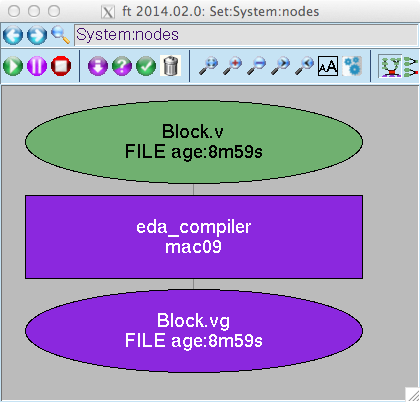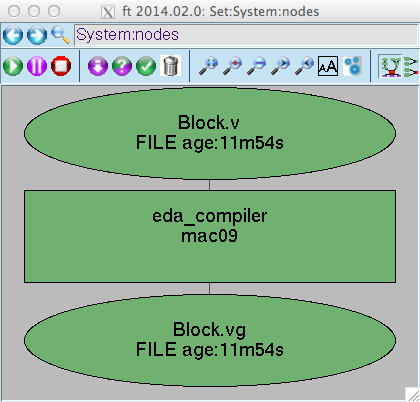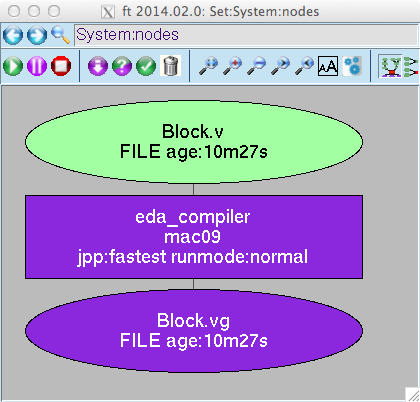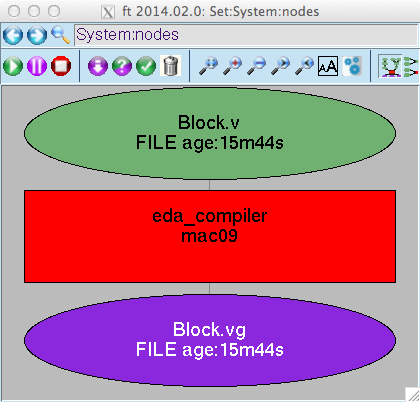Example 1
% mkdir aof_ex1
% cd aof_ex1
% date > Block.vExample 1 with Scripts
% $VOVDIR/training/art_of_flows/example1/script1_1.csh Block.v Block.vg
% $VOVDIR/training/art_of_flows/example1/script1_2.csh Block.v Block.vgExample 1 with make
% make -f $VOVDIR/training/art_of_flows/example1/Makefile1_1
% make -f $VOVDIR/training/art_of_flows/example1/Makefile1_2% make -f $VOVDIR/training/art_of_flows/example1/Makefile1_3Example 1 with FlowTracer
% vovbuild -f $VOVDIR/training/art_of_flows/example1/Flow1_1.tcl
% vovbuild -f $VOVDIR/training/art_of_flows/example1/Flow1_2.tcl
Figure 1. Flow is Built

Figure 2. Flow is done

Figure 3. Flow has been changed

Figure 4. Flow is failing